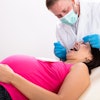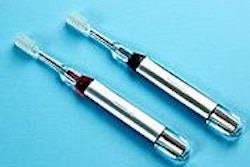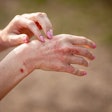Most schools in Wyoming do not have the recommended levels of fluoride in their water, and children with untreated tooth decay who attend those schools are more likely to need urgent dental care, according to the first comprehensive oral health study of Wyoming residents in more than 20 years.
The Oral Health Initiative (OHI) report, released this week by the Wyoming Department of Health and the Wyoming Dental Association (WDA), was designed to improve Wyoming's oral and overall health by answering key oral health questions central to better treatment, prevention, education, and, ultimately, improved cost savings. Researchers screened some 5,300 third-graders and surveyed pregnant women and seniors about their dental health.
Among the report's findings:
About three-quarters of water samples collected from Wyoming schools had fluoride levels below the recommended range.
Rural schools were about three times more likely to have more untreated decay than schools in higher population areas.
The percentages of Wyoming children with untreated decay and treated decay were not significantly different from national averages or from surrounding states. In fact, more Wyoming children had sealants than the national average.
Nearly half of pregnant women had not visited a dentist in the past year.
Nearly 80% of seniors did not report having unmet dental needs in the past year, which is a positive result.
The report also lays out 26 specific recommendations that will help set the course for oral health improvements in Wyoming for decades to come, according to Brad Kincheloe, D.D.S., president of the WDA. Among those recommendations:
- Create a Wyoming oral health plan that includes prevention efforts aimed at schools with high decay percentages.
- To help fight oral cancer, continue efforts to enact Clean Indoor Air laws and ordinances on tobacco use at both community and statewide levels.
- Initiate programs within local communities that help provide emergency oral health and continued care for school-age children, especially those population groups identified in the OHI report with high decay levels.
- Encourage partnerships between Wyoming nursing homes and local dentists to provide healthcare for residents, along with further studies of this growing population.
- Expand oral disease prevention measures, especially school-linked oral health programs, use of fluoride varnish and dental sealants, and community water fluoridation.
- Increase the Wyoming EqualityCare (Medicaid) dental provider network.
- Integrate oral healthcare with general health promotion strategies, especially obstetrics for early infant care.
- Expand the duties of trained dental staff under the direct medical supervision of a dentist.
Copyright © 2010 DrBicuspid.com



















